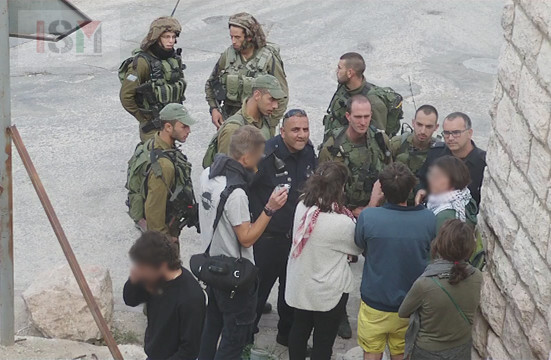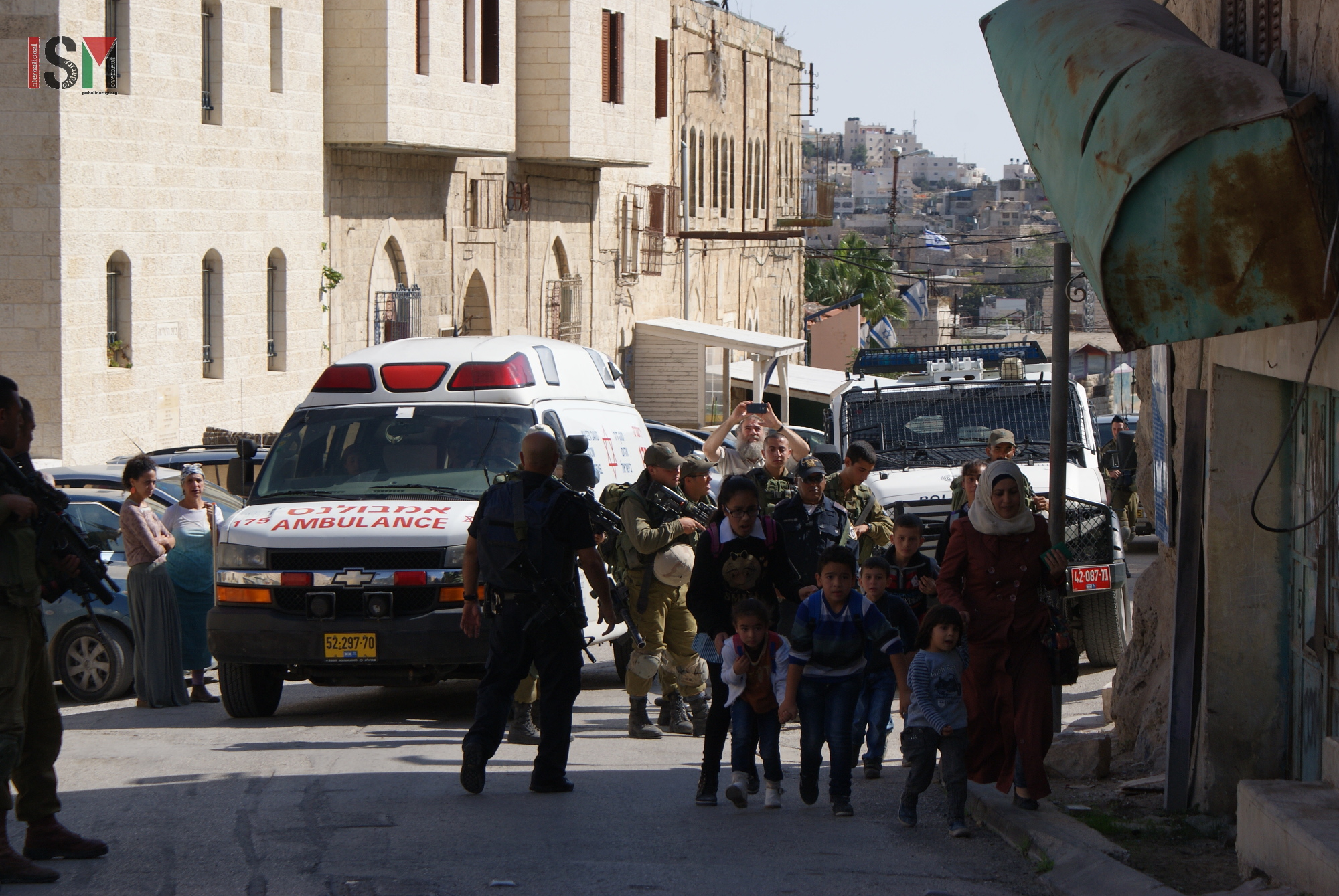Category: Hebron
-
International human rights defenders arrested and evicted while “Hebron is becoming ghettoized”
4th November 2015 | International Solidarity Movement, al-Khalil team | Hebron, occupied Palestine Two international human rights defenders were arrested in Hebron (al-Khalil) yesterday morning, November 3rd, while six others were ordered to leave an apartment in the H2 neighbourhood of Tel Rumeida by threat of arrest. The German and American nationals were arrested at…
-
Israeli forces redouble brutal efforts to curtail and isolate Palestinians’ daily lives
1st November 2015 | International Solidarity Movement, al-Khalil team | Hebron, occupied Palestine On Sunday, 1st November 2015, Israeli forces prevented movement of Palestinians in various areas in al-Khalil (Hebron) that have previously been declared a ‘closed military zone’. Violence against school-children and teachers has seen a sharp increase. International observers documenting and reporting on…
-
Israeli forces increase harassment of Palestinian school-children in al-Khalil (Hebron)
1st Novemeber 2015 | International Solidarity Movement, al-Khalil team | Hebron, occupied Palestine This morning at Qurtuba school in al-Khalil (Hebron), Israeli soldiers harassed school-children, teachers and adults trying to pass the nearby checkpoint. The stairs leading to Qurtuba school, the scene of a heinous murder of a Palestinian youth by Israeli forces three days…



